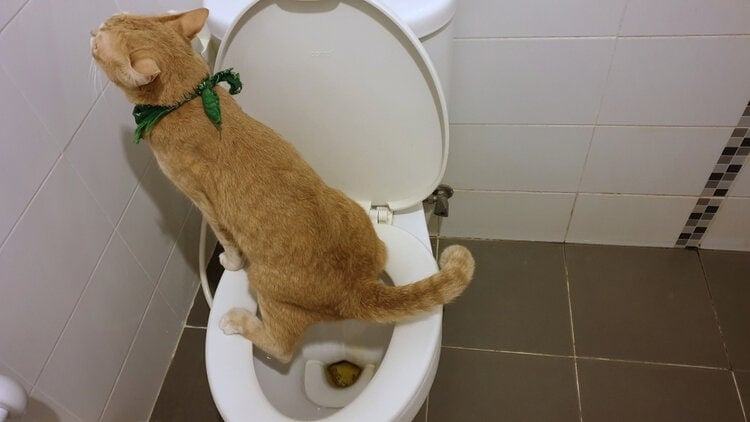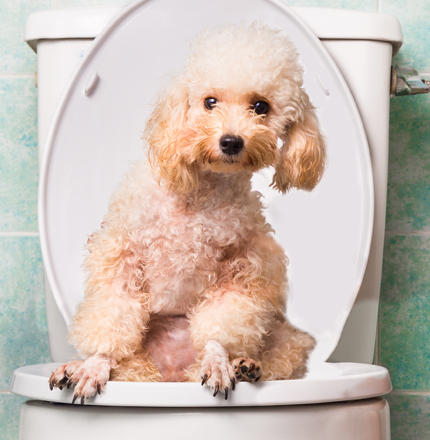What Flushing Animal Waste Down the Toilet Could be Harmful
What Flushing Animal Waste Down the Toilet Could be Harmful
Blog Article
Any individual seems to have their own individual rationale on the subject of Why you should never flush dog poop down the toilet.

When it pertains to throwing away waste, particularly animal waste, lots of people typically resort to the practical alternative of flushing it down the toilet. Nonetheless, this apparently simple option can have major consequences for the setting and public health. In this short article, we'll explore why flushing pet waste down the toilet is a poor concept and provide alternative methods for proper disposal.
Introduction
Proper garbage disposal is crucial for maintaining ecological sustainability and public health. While it may seem safe to purge animal waste down the commode, it can cause different issues, both for the setting and human wellness.
Dangers of flushing animal waste
Environmental influence
Flushing pet waste presents hazardous bacteria and microorganisms into rivers, which can negatively impact aquatic ecosystems. These virus can contaminate water sources and injury marine life, disrupting fragile communities.
Public health issues
Pet waste contains damaging germs such as E. coli and Salmonella, which can present severe wellness threats to people. Flushing animal waste down the toilet can contaminate water materials, resulting in the spread of diseases and infections.
Alternatives to flushing
Instead of flushing pet waste down the bathroom, there are a number of alternative disposal approaches that are extra eco-friendly and hygienic.
Composting
Composting animal waste is an eco-friendly means to throw away it. By composting, raw material is broken down into nutrient-rich soil, which can be used to fertilize gardens and plants.
Land fill disposal
Taking care of animal waste in a land fill is another alternative. While not as eco-friendly as composting, it is a more secure choice to flushing, as it stops the contamination of water sources.
Family pet waste disposal systems
There are customized animal waste disposal systems offered that securely and hygienically deal with pet waste. These systems often utilize enzymes to break down waste and remove odors.
Steps to appropriate pet waste disposal
To guarantee appropriate disposal of animal waste, adhere to these steps:
Scooping and nabbing waste
Consistently scoop and bag pet waste making use of biodegradable bags. This avoids waste from polluting the atmosphere.
Utilizing assigned waste bins
Dispose of bagged pet waste in marked waste containers, such as compost bins or garbage dump bins. Avoid flushing it down the commode in all more info expenses.
Cleaning can and family pet areas routinely
Routinely clean can and family pet areas to avoid the buildup of waste and microorganisms. Use pet-safe cleansing products to keep hygiene.
Advantages of proper disposal techniques
Taking on appropriate disposal methods for animal waste uses several advantages:
Minimized environmental pollution
Appropriate disposal approaches reduce the risk of environmental pollution, securing waterways and ecosystems from contamination
Lessened threat of water contamination.
By preventing flushing pet waste down the bathroom, the threat of water contamination is dramatically reduced, guarding public health.
Boosted hygiene and hygiene
Correct disposal methods advertise far better hygiene and health, developing a more secure setting for both human beings and pets.
Final thought
To conclude, flushing animal waste down the commode is dangerous to the atmosphere and public health. By embracing alternative disposal approaches and complying with proper waste management methods, we can reduce the adverse effect of animal waste and contribute to a cleaner, much healthier planet.
What To Do With Dog Poo – The Do's And Don'ts Of Disposing Of Faeces
Dog poo bins
Some councils provide dedicated dog waste bins in popular dog-walking areas that can take dog poo that has been bagged but you can legally dispose of dog waste in any public litter bin, as long as it is securely bagged. This also applies to your wheelie bin at home.
Do not flush
Water companies do not recommend flushing dog faeces down the toilet because certain parasites can survive the water processing treatment and are potentially harmful to humans. You should also never consider flushing dog poo that has been bagged down the toilet as the bags will not break down and instead create severe blockages in the sewage system.
In the woods
The Forestry Commission promotes a ‘stick and flick’ method for dealing with waste in the woods. This means finding a stick and using it to flick any poo from off the path so that it is out of the way of other walkers. You could also bury it as long as it is not in an area where there might be livestock.
Livestock
Parasites found in dog poo can be transmitted to livestock if they inadvertently eat infected faeces that has been left on grazing land. This could result in the death of sheep or abortion in cattle so you should always make sure you pick up your dog’s waste in fields where livestock could be present.

Routinely clean can and family pet areas to avoid the buildup of waste and microorganisms. Use pet-safe cleansing products to keep hygiene.
Advantages of proper disposal techniques
Taking on appropriate disposal methods for animal waste uses several advantages:
Minimized environmental pollution
Appropriate disposal approaches reduce the risk of environmental pollution, securing waterways and ecosystems from contamination
Lessened threat of water contamination.
By preventing flushing pet waste down the bathroom, the threat of water contamination is dramatically reduced, guarding public health.
Boosted hygiene and hygiene
Correct disposal methods advertise far better hygiene and health, developing a more secure setting for both human beings and pets.
Final thought
To conclude, flushing animal waste down the commode is dangerous to the atmosphere and public health. By embracing alternative disposal approaches and complying with proper waste management methods, we can reduce the adverse effect of animal waste and contribute to a cleaner, much healthier planet.
What To Do With Dog Poo – The Do's And Don'ts Of Disposing Of Faeces
Dog poo bins
Some councils provide dedicated dog waste bins in popular dog-walking areas that can take dog poo that has been bagged but you can legally dispose of dog waste in any public litter bin, as long as it is securely bagged. This also applies to your wheelie bin at home.
Do not flush
Water companies do not recommend flushing dog faeces down the toilet because certain parasites can survive the water processing treatment and are potentially harmful to humans. You should also never consider flushing dog poo that has been bagged down the toilet as the bags will not break down and instead create severe blockages in the sewage system.
In the woods
The Forestry Commission promotes a ‘stick and flick’ method for dealing with waste in the woods. This means finding a stick and using it to flick any poo from off the path so that it is out of the way of other walkers. You could also bury it as long as it is not in an area where there might be livestock.
Livestock
Parasites found in dog poo can be transmitted to livestock if they inadvertently eat infected faeces that has been left on grazing land. This could result in the death of sheep or abortion in cattle so you should always make sure you pick up your dog’s waste in fields where livestock could be present.

I hope you liked our topic on 10 Things You Should Never Flush Down The Toilet. Thank you so much for finding the time to read through our piece of content. Sharing is caring. Helping people is fun. I treasure reading our article about 10 Things You Should Never Flush Down The Toilet.
Further Details Report this page